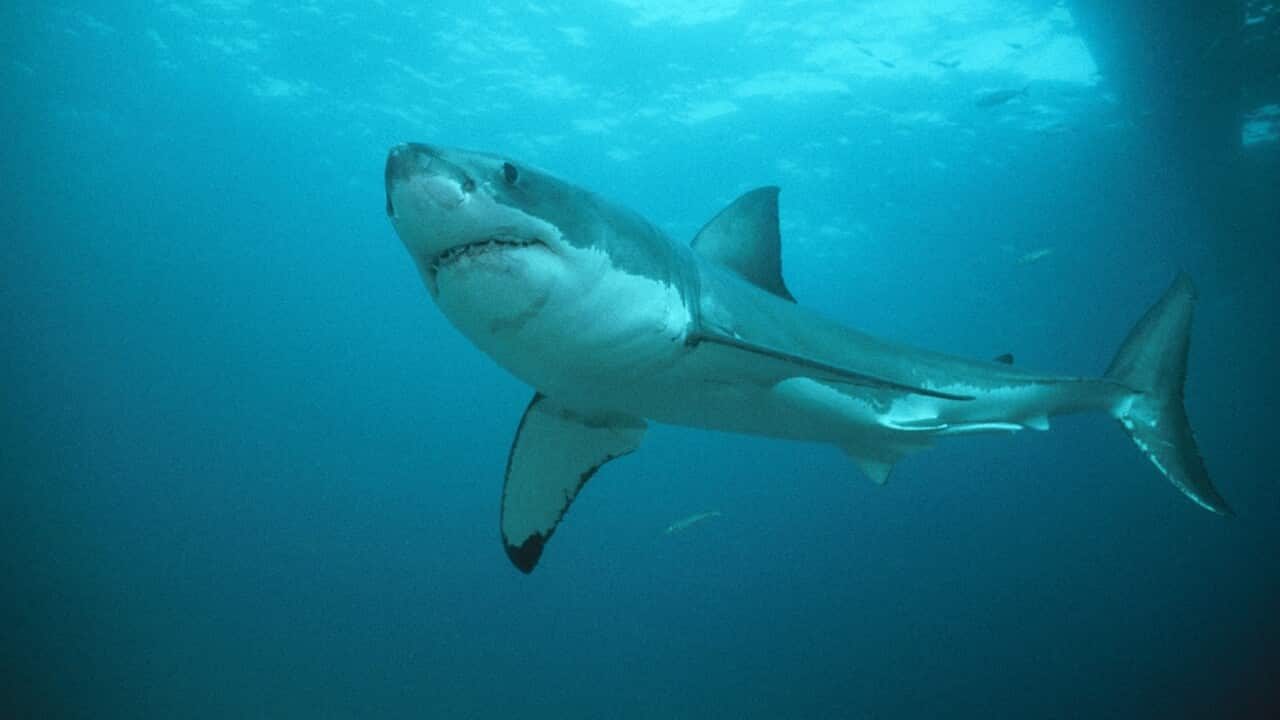TRANSCRIPT
Jaws, The Shallow, Great white ... all movies that painted a very scary picture of sharks.
But in real life, there are more than 500 species of them, with only a few actually representing a threat to humans.
Dr Darryl McPhee, Associate Professor of Environmental Science at Bond University, explains.
"So there's lots of movies about sharks, particularly white sharks. Most species of sharks are not harmful to humans. There are three species responsible for most serious unprovoked bites and most fatal bites. That's the white shark, the bull shark and the tiger shark. "
These sharks are all present in Australia's oceans, and after another fatal attack that took the life of a 17-year-old girl in Queensland on Monday, questions about the safety of humans in the water have been raised.
It is because it was the third fatal shark attack in less than six weeks.
On the 28th December, a 40-year-old man died on the central Queensland coast, and earlier that month, a surfer was killed in South Australia.
Even so, data from the Taronga Conservation Society reveals the average of deaths caused by shark attacks is around two people per year.
But are sharks now more likely to bite humans?
Dr McPhee says this is not the case.
"It's unlikely that sharks habituate to human flesh. They can habituate to human activities such as fishing and other activities, but there's no such thing as a rogue shark going around deciding that they want to hunt people."
So, why do sharks attack?
Dr McPhee explains.
"We are not regular prey for sharks, but sharks do bite people. Sometimes they scavenge deceased people, deceased bodies, but occasionally they do bite a person whilst they're swimming or surfing, which is obviously what's happened tragically at Bribie Island yesterday. There is some view that it's mistaken identity, but at times sharks are very opportunistic feeders and are just trying to feed on anything, anything that they possibly can."
Even so, Senior lecturer in Marine Ecology at Griffith University, Dr Vincent Raoult, reaffirms that there is no reason for concern.
"We know that shark bites occur infrequently and sometimes they appear to cluster, but this can be really hard to predict. So for example, in 2015 there was a cluster in New South Wales, in I believe 2019 there was a cluster in the Whitsundays.. and these just are a factor of various variables aligning with the environment, with the presence of sharks, with the presence of people and people get bit occasionally, but it's very important to remember that the risk of getting bit is extremely low.”
But authorities have measures in place to try to reduce risks.
A very common strategy in Australia's East Australian coast are the shark nets.
Dr Raoult explains how they work.
"The idea with those nets is they basically catch and kill sharks. So those nets are effectively just fishing nets designed to catch sharks. And as a result of that, they are not actually barriers. Most people think they're barriers that kind of surround the swimming area and prevent sharks from getting in, but in fact they're about 120 meters long, they are a couple meters high and there's space above and below the net, which is designed to help prevent the bycatch of things like dolphins and turtles for example.
But the strategy of killing sharks is controversial.
Dr Raoult again.
"They are catching and killing species that in some cases are threatened and those animals are very important for our marine ecosystems. In Australia, we're really tied to our fishing, both recreationally and commercially. We also do a lot of recreational use of our oceans, so that's snorkeling or diving or free diving. And in all those cases, sharks are kind of protectors of our oceans. So they help maintain healthy ecosystems and if we reduce shark numbers to the point where they don't occur in any significant number anymore, potentially with this idea that it could reduce shark bite and we have very good evidence that it wouldn't, then we're potentially putting our ecosystems at risk. "
And this could affected the function of the ocean, having unimaginable consequences.
"Predominantly they kill a lot of harmless species including sharks and rays. But also, let's not forget turtles, dolphins, and they do catch and occasionally kill whales. And if you start killing them (sharks) in mass, then you're potentially having big impacts into how our oceans function and that can have long lasting effects, which are very hard to predict and are likely to be pretty bad."
But if shark nets can be so destructive to the environment, what else can be done?
Brent Manieri, Public Safety Manager at Surf Lifesaving New South Wales, says that there are shark monitoring strategies in place.
"The one that surf lifesaving play a key role in is the use of UAVs or drones across 50 sites along the coastline to provide, I suppose, aerial surveillance of activity that may be happening in the water. And then those UAV pilots can work with beach authorities such as lifesavers or lifeguards to alert the public if there are any sharks in the vicinity that they're swimming in."
Another strategy is the tagging of the sharks.
This is done primarily by using what are called smart drum lines.
Dr Raoult explains.
"Those are drum lines that are not designed to kill the sharks. They float in the water, they have a beacon on top that basically lets a person on a boat know exactly when and where a shark has been caught. So they can get to that shark very quickly, usually within 30 minutes at the most. And that means they can then take the shark next to the boat, implant a transmitter, whether it's an acoustic or satellite transmitter, and release the shark out at sea, usually further out at sea to try and reduce the risk to people. Now we have extremely good data now coming out over the last decade that shows that this is a very low impact activity for sharks with the survivability of over 95% of the sharks that are caught in this way. And we have now physiological studies that show that the long-term impacts of that is not more than a stressful event. So for a shark, it's kind of like getting a big vaccine."
And with other options available to avoid shark bites, Dr Raoult says strategies might change.
"There's definitely been a shift over the last decade in terms of public perception with a greater desire to preserve sharks further and to remove these lethal control measures, but the problem is governments have a duty to protect their constituents, and so they see it as a difficult decision to remove those shark nets. But I think over time we're not at a place where it's something that can be feasible for governments to actually take the step and remove those lethal control measures in favour of other things."
In the meantime, Mr Manieri says ordinary people can also do their part.
"Swimming in a patrolled location, obviously you've got lifeguards and lifesavers and as I say, maybe not swimming at dawn, dusk at night, ensuring that you're not swimming with murky dirty water and waters that have got, I suppose, known effluent or sewage that might've come out. Avoiding areas where there's signs of bait fish, a good way of knowing where some of that fish feeding activity might be happening is where you see seabirds diving into the ocean. So there's a few things that people can do themselves to assist in limiting, I suppose, their exposure to having a shark interaction"













